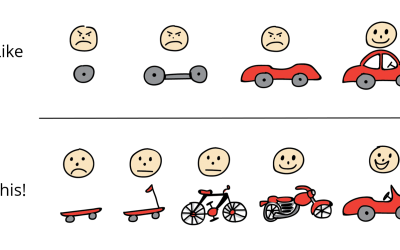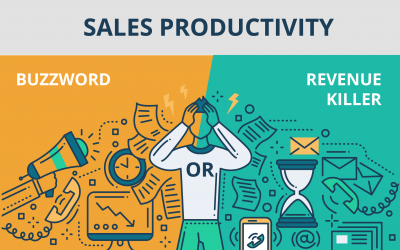Staying ahead of the competition is a must. Here’s six things you need to be doing as a sales manager in 2018:
1. Get real-time data to make better decisions
Gut-feel and experience are essential guiders of decisions in sales teams, but these shouldn’t be used alone. Accessing relevant data to get feedback and forecast is now standard in today’s technology age. Modern sales apps allow pro-active tracking of customers and competitors. This reduces guesswork and enables metrics to be developed that are useful predictors of buying behaviour. Accessing real-time feedback also revolutionises sales meetings. Instead of spending time getting status updates, more time can be spent on coaching and training. Easy-to-see overviews tailored to your requirements make forecasting a pleasure. With a full sales solution, sales processes can also be standardised and streamlined. This leads to greater efficiencies and quicker onboarding of new sales reps.
Syntel Case Study
Syntel is a US $825m IT and outsourcing company. Recently, they were growing rapidly and needed a system to revamp their sales processes. They needed something that could manage leads and opportunities right through to closure. The ability to integrate marketing campaigns was important to drive impact and growth. By deploying a Microsoft Sales and Marketing solution, they were able to see their sales pipeline at multiple levels in real-time. Global account teams were able to see the progress of their colleagues in different territories. This spurred teams on to better performance. Revenue forecasting became much more reliable and sales processes were tracked and improved upon. This allowed growth to continue. Management of sales teams became so much easier. You can read the full case study here.
2. Improve your customer information
When a sales rep moves on, valuable customer information may go with them. This is always a risk if reps keep their own prospect and customer data in spreadsheets. The solution is to bring it all into the cloud in one system. That way everyone on the team can see the data and add to it, giving a richer understanding of the customer. Your customer and prospect data is a key asset for your sales team. Centralising this allows the information to grow and mature.
Trek Case Study
Trek sells bikes through a network of independently owned retailers. They rely on a close, supportive relationship between the local sales reps and the store owner. In the past, when a rep left or retired it would take years to rebuild the rapport and customer knowledge. By installing a Microsoft Sales solution, Trek were able to see account histories, financial data and inventory all in one place. New reps had all the info they needed to connect meaningfully with store owners. Event reports and weekly updates were sent out using the sales solution. This ensured sales reps had detailed records on customers, making the customers feel known and cared for. You can read the full case study here
3. Reduce your team’s admin burden.
Reps spend 75% of their time on non-selling activities. But with modern sales apps, this can be dramatically reduced. Empower your sales reps to have all the customer info they need on their phones. Allow them to update deal info as soon as the meeting is over and so give you accurate forecasting information. There are a number of comprehensive systems on the market. At The CRM Team, we use the Microsoft Dynamics 365 for Sales (compatible with iOS, Android and Windows). It has seamless integration with Office 365.You can track all your customers and prospects without ever leaving Outlook.
CSX Transportation Case Study
CSX Transportation has 32,000 employees. Previously, customer information was spread over multiple systems. There was no way of seeing customer touch points across different business groups. Frustratingly, sales information wasn’t held centrally. By bringing all this information into one system, sales teams were able to save on their admin time. Consequently, they spend more time building customer relationships. It was only a matter of time before revenue increased. Read the full case study here
4. Increase cross-selling through smarter collaboration.
Nowadays, the best sales teams collaborate regularly on accounts. Learnings are shared across teams, and cross-selling opportunities are identified more easily. This is the case whether you run an inbound sales team or have reps on the road. With greater collaboration, teams can respond quicker to new sales opportunities.
Nat West Bank Case Study

Recently, UK Bank Nat West installed a Microsoft CRM solution, going live to 3000 users. Now, when a customer contacts the bank, sales staff have all the relevant information at their fingertips. It doesn’t matter which team the customer made their initial contact with. This smart pooling of customer data has led to increased cross-selling. The increased revenue from this alone will provide a return on investment by 2018. Read the full case study here.
5. Respond to customer’s needs on-the-go.
In a world of smart phones, it’s only natural that sales and customer data should be accessible via mobile devices. This sort of access not only increases productivity but also keeps sales teams connected and aware of what each other is doing. Mobile sales solutions allow for flexibility and responsiveness to customer needs. A good system will be able to work whether there is web access or not. It should also provide a cloud backup so that data is never at risk.
Grant Thornton Case Study
Grant Thornton LLP is one of the world’s largest professional services providers. Recently, they installed a new CRM solution with mobile sales capacity. Rick Stow, their Head of Client Relationship Management, said: “One of the most appealing aspects… is the ability to deliver the same experience across multiple platforms. Whether you’re opening a form from within Outlook, from a browser, or on a mobile device, you have full functionality.” Stow says this has resulted in their workforce being more connected and more productive. Ultimately, enabling them to service their clients better. Since upgrading to a CRM system with a mobile sales capability Grant Thornton LLP has experienced:
– a 450% jump in the number of sales opportunities,
– a 36% increase in average win value, and –
– a 700% rise in the number of contacts in the system.
Read the full case study here.
6. Get better marketing insight
Not knowing when prospects interact with you is a hinderance to your sales process. By adopting a combined marketing and sales solution you can get quick insight when prospects browse your website, read an article or download a white paper. It also helps marketing and sales team align better, ensuring that marketing hands over only quality leads.
Crowe Horwath Case Study
Crowe Horwath LLP is a performance consulting firm. They decided to bring all sales records and customer information under one sales solution. Dave Keever, Principal at Crowe explains the impact:
“We now have full visibility of our marketing efforts around a contact or account. We can see, for example, if a customer or prospect opts in on an email or has downloaded any of our white papers, and we can then discuss that with them in a meeting. Before, it could take a day or two to find out about an account and the surrounding marketing activities. Now, it takes seconds.” Keever says that the adoption has been very cost effective: “Both the greater visibility into our sales pipeline and the increase in the number of users are contributing to our return on investment. We expect the payback period to be between nine and 15 months.”
Read the full case study here.










Recent Comments